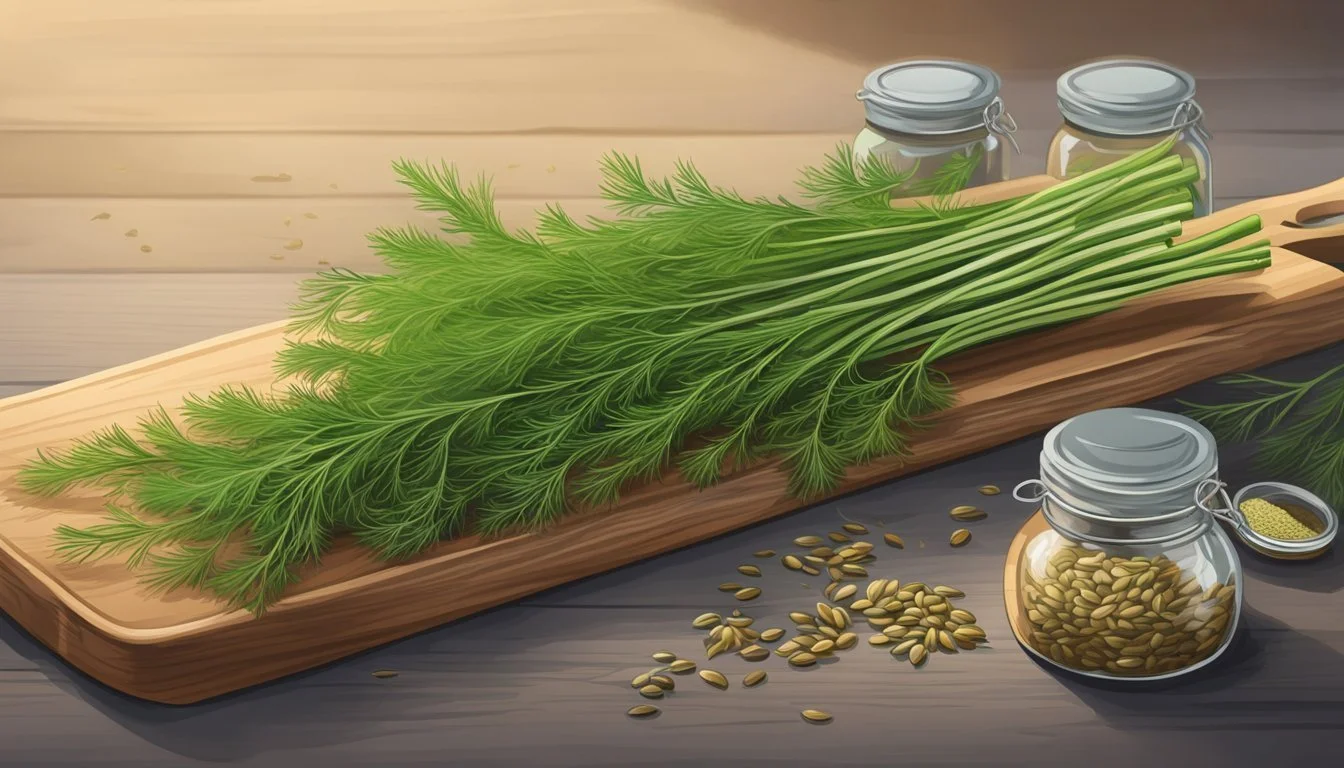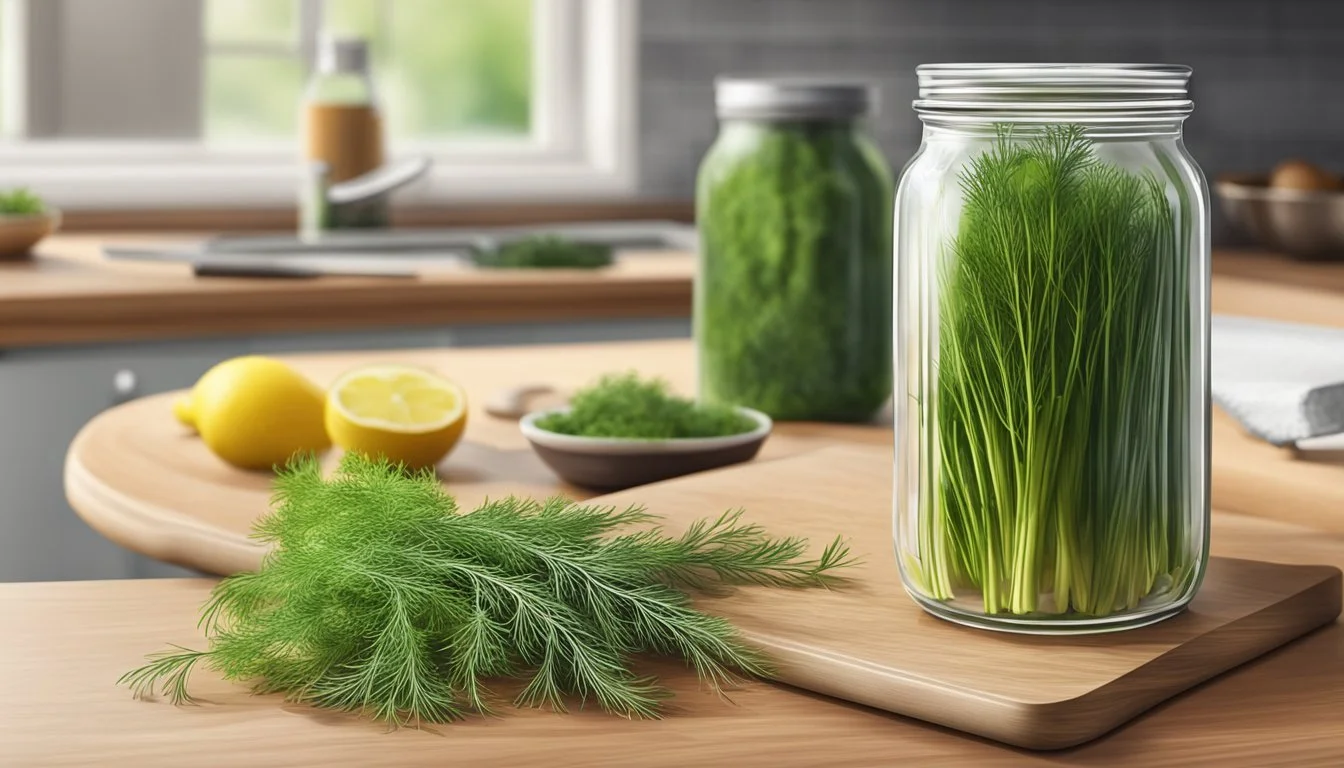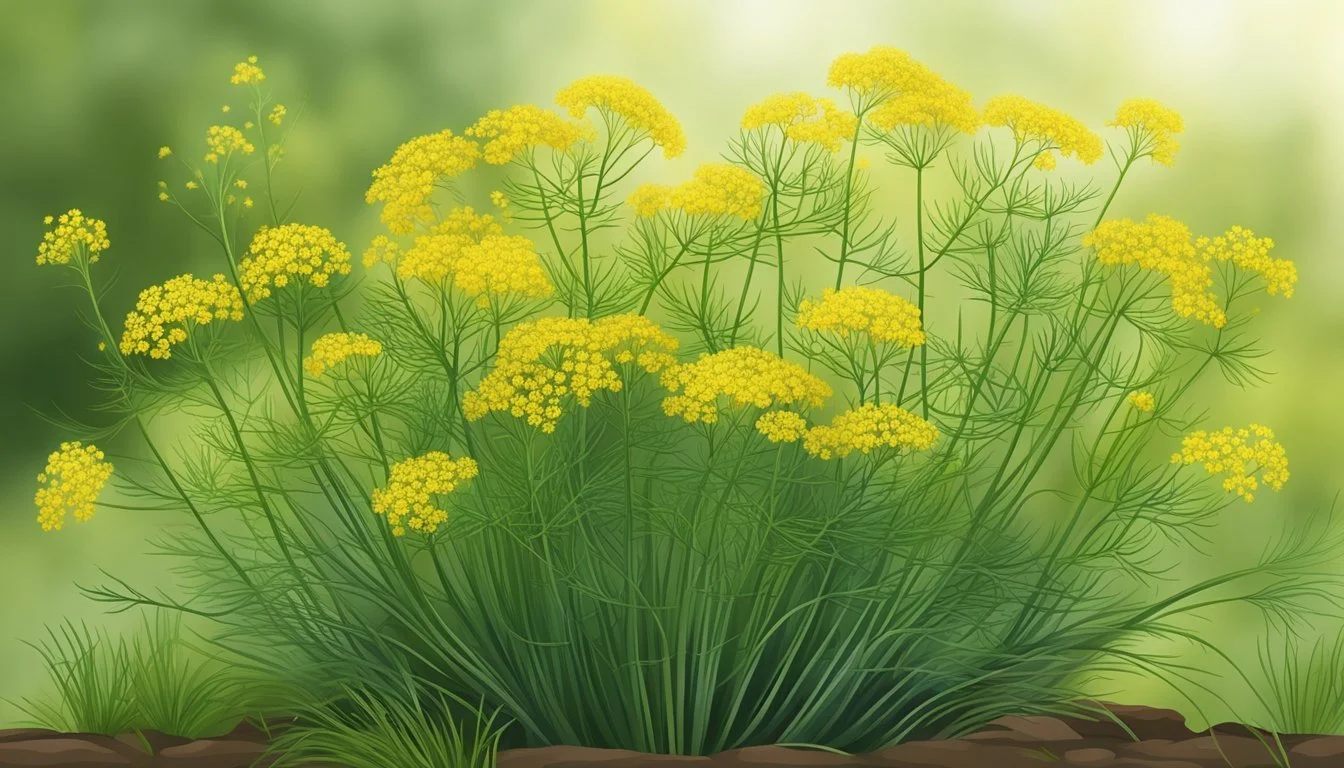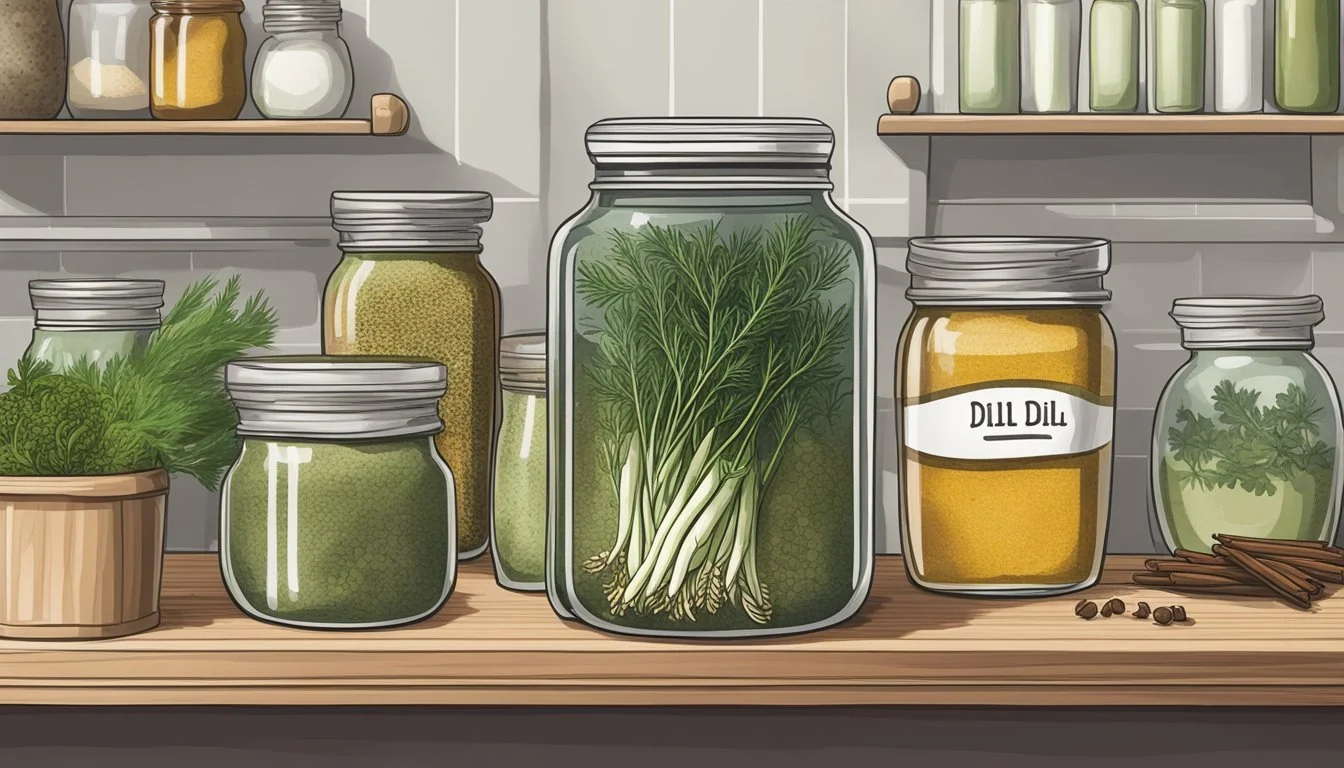How Long Does Dill Last?
Shelf Life and Preservation Tips
Dill (how long does dill last?), a fragrant herb with delicate, feathery leaves, is prized for its seeds and foliage, which are used for flavoring many dishes. The lifespan of dill in the kitchen is a common inquiry among culinary enthusiasts and home cooks, particularly as it relates to storing the herb to maintain its freshness and potency. Fresh dill typically lasts 10 to 14 days when stored properly in the refrigerator. Ensuring the herb is thoroughly dried after washing and wrapping it in a damp paper towel before placing it in a sealable bag helps extend its shelf life.
The option to freeze dill offers a longer-term solution for preserving its flavor. By trimming, chopping, and drying it before freezing in heavy-duty freezer bags or ice cube trays, dill can be kept for 6 to 12 months. Planting and harvesting practices also influence the longevity of dill. Gardeners should consider factors like sunlight exposure, soil quality, and protection from strong winds for optimal growth and extended freshness post-harvest.
Dill Basics
In discussing the fundamentals of dill, it's important to focus on its characteristics as a versatile herb, its cultivation varieties, and the optimal conditions that help it thrive.
Plant Description
Dill (Anethum graveolens) is an annual herb known for its delicate, feathery leaves and distinctive aroma. The plant typically grows to a height of 2 to 4 feet and boasts umbel-shaped yellow flowers which emerge in summer. Dill's deep taproot makes it resistant to mild droughts.
Varieties and Cultivation
Several varieties of dill are available, each with unique qualities such as size and flavor profile. 'Bouquet' is popular for its abundant leaves, while 'Mammoth' and 'Long Island' are prized for their large seed heads, ideal for pickling. Dill is propagated through seeds, which should be sowed directly in the garden since the plant's long taproot does not favor transplanting.
Optimal Growing Conditions
Dill thrives in full sun, preferring 6 to 8 hours of direct sunlight daily. The herb grows best in rich soil enhanced with organic matter. Ideal soil temperature for germination is between 60-70°F, with a pH ranging from 5.5 to 6.5. Seeds should be planted about 1/4 inch deep and kept moist to ensure successful germination, usually within 10-14 days. Dill can survive light frost, but extreme cold and overwatering may harm the plant. Regular watering should maintain slightly damp soil without becoming waterlogged.
Storing Fresh Dill
Storing fresh dill correctly extends its shelf life and preserves its flavor. The refrigerator and freezer are the primary storage options, each method depending on the intended duration of storage.
Refrigeration Methods
Short-Term Refrigeration: Fresh dill can last up to 1 week when stored properly in the refrigerator. To store dill in the fridge:
Rinse the dill and pat it completely dry.
Wrap the dry dill in a damp paper towel to maintain moisture.
Place the wrapped dill in a plastic bag or container, ensuring it is not airtight.
Store in the crisper drawer of your refrigerator.
Extended Refrigeration: For slightly longer storage in the refrigerator:
Snip the ends of the dill stems.
Submerge the stem ends in a jar of water.
Loosely cover the leaves with a plastic bag.
Change the water every few days to keep the dill fresh.
Freezing Techniques
Direct Freezing: To freeze fresh dill:
Wash the dill and dry thoroughly.
Chop the dill if desired, or leave it in sprigs.
Place the dill on a baking sheet lined with parchment paper.
Freeze until the dill is firm, then transfer to a sealed container or freezer bag.
Ice Cube Tray Freezing: For convenience in future use:
Finely chop the dill.
Pack the chopped dill into ice cube trays, filling each cube halfway.
Pour water or olive oil over the dill to fill the trays.
Once frozen, transfer the dill cubes to a freezer bag or container.
Both freezing methods allow for dill to be stored for 6-12 months. Always label the storage containers with the date of freezing to track how long the dill has been stored.
Preservation and Shelf Life
Proper preservation methods significantly extend the shelf life of dill, maintaining its quality for various uses. These methods not only retain the distinctive flavor for culinary uses but also ensure dill can be enjoyed out of season.
Drying Dill
To dry dill, one should lay out the sprigs or leaves in a single layer, ensuring they are not overlapping, which could lead to uneven drying. The optimal drying environment is a warm, low-humidity area. If using an oven, the temperature should be set to its lowest setting and the dill should be checked every 30 minutes to avoid burning. Once dry, the leaves should feel brittle to the touch. For seeds, it's important to wait until they are ripe before drying to ensure the best flavor. Store dried dill in an airtight container to preserve its quality; it can last for 1-3 years when stored properly.
Pickling With Dill
Pickling with dill involves using the herb along with a vinegar solution to impart flavor and preserve foods, such as in dill pickles. By heating vinegar and allowing whole dill sprigs to soak it up, one can infuse the vinegar with dill flavor before mixing it with the pickling solution. It is critical to use the correct vinegar concentration and follow safe canning practices to ensure the shelf life and safety of the pickled goods. Dill enhances the taste of pickles and also contributes to the pickling process' preservative effect.
Culinary Uses
Dill is recognized for its feathery green fronds and distinctive aroma and taste, which enhance a myriad of culinary creations. It serves both as a seasoning and an aromatic garnish in a variety of dishes.
Flavor Pairings
Dill pairs exceptionally well with certain flavors and ingredients. It offers a slightly sweet and grassy taste, with a hint of anise-like licorice. Fresh dill is often used with:
Seafood: Enhances the flavor of fish, especially salmon.
Vegetables: Complements a range of vegetables, particularly cucumbers (how long do cucumbers last?) and potatoes.
Eggs: Brings a fresh dimension to omelets and scrambled eggs.
Soups: Adds a distinct flavor to soups, notably in the case of broths and creamy recipes.
Dill seeds, bearing a more robust flavor profile, are typically reserved for pickling or bread.
Dill in Recipes
Dill can be utilized in various recipes, capitalizing on its fresh, tangy accent. Its common culinary applications include:
Salads: Chopped fresh dill works wonders in potato salads, or mixed greens.
Garnish: Fresh fronds can be sprinkled atop dishes before serving, not just adding to the visual appeal but also imparting a burst of flavor.
Dill Weed vs. Dill Seed: The term 'dill weed' refers to the leaves and stems of the plant which are used for their delicate flavor, while dill seeds have a bolder taste, suitable for dishes that require a stronger aromatic presence.
Dill's versatility allows it to be preserved via drying or freezing, accommodating various recipe requirements and maintaining its presence in the kitchen year-round.
Dill in Gardening
In gardening, the herb dill (Anethum graveolens) is known for its ease of growth from seeds and the benefits it offers to garden ecosystems. It not only serves culinary uses but also plays a role in companion planting and attracting beneficial wildlife.
Companion Planting
Companion planting with dill can be highly beneficial. Dill's aromatic properties make it a good companion for brassicas such as cabbage, as it can help to repel pests like aphids. However, gardeners should be cautious when planting dill near carrots and fennel (how long does fennel last?), as they can cross-pollinate and potentially interfere with seed production. Dill can also enhance the growth of cucumbers by attracting predatory insects that control cucumber pests.
Positive companions include:
Brassicas (e.g., cabbage, broccoli)
Cucumber
Lettuce
Onions
Plants to avoid near dill:
Carrots
Fennel
Tomatoes
Attracting Beneficial Wildlife
Dill acts as an excellent attractor for beneficial insects, such as pollinators and predator species that manage pest populations. Its yellow umbel flowers draw in pollinators like bees and butterflies, essential for the health of the garden. Additionally, it supports garden diversity by attracting predatory insects, such as ladybugs and lacewings, which feed on common garden pests. Planting dill can also provide a habitat for parsleyworms, the larvae of black swallowtail butterflies, which later turn into pollinators themselves.
Beneficial wildlife attracted by dill:
Bees
Butterflies
Ladybugs
Lacewings
By integrating dill into their gardens, cultivators leverage its growth habits and relationships with other plants and insects to foster a more resilient and productive garden space.
Health and Maintenance
Proper watering and weeding tactics, along with efficient pest and disease management, are crucial to maintaining the health and longevity of dill in the garden.
Watering and Weeding
Dill requires consistent moisture, especially in the early stages of growth, to develop its deep taproot. Gardeners should aim to keep the soil moist but not waterlogged, as dill is susceptible to root rot if overwatered. A balanced approach to watering—**providing one inch of water per week** either through rainfall or supplemental watering—*is ideal. Early morning watering is beneficial as it allows foliage to dry before the evening, which can help prevent the onset of mildew.
Weeding around dill plants is necessary to reduce competition for nutrients and water. It is important to weed gently without disturbing the dill's taproot. Adding a layer of mulch can help retain soil moisture and suppress weed growth.
Pest and Disease Management
Dill can be afflicted by a variety of pests, such as aphids and spider mites, and diseases like powdery mildew and downy mildew.
Pest/Disease Management Strategy Aphids Rinse off with water or use insecticidal soap. Spider Mites Introduce beneficial insects or apply miticides if necessary. Powdery Mildew Ensure proper air circulation; apply fungicides when needed. Downy Mildew Avoid overhead watering; remove affected plants to prevent spread.
Regular monitoring of the plants can prevent large-scale infestations and outbreaks. If pests are detected, they should be addressed promptly, favoring non-chemical methods when possible to maintain garden health.
Dill plants should not require much fertilizer if planted in rich, organic matter. However, a light application of a balanced fertilizer can be helpful midway through the growing season. It's crucial to protect dill from strong winds, which can cause the tall, thin foliage to bend or break. Strategic planting or providing windbreaks can help alleviate this issue.
Additional Tips
When aiming for the longevity and quality of dill, one should consider the methods of harvesting and seed collection, as well as how seasonal changes affect these processes.
Harvesting and Seed Collection
Harvesting dill at the right time ensures optimal freshness and shelf life. For the best quality, one should cut the feathery leaves as needed, ideally in the morning when the essential oils are most concentrated. When dill plants have finished flowering, they will produce umbels of seeds. One can collect these seeds once they turn brown and ripe. Carefully cut the seed heads and place them in a paper bag to catch seeds as they dry out. The seeds can be stored in a cool, dry place and should be used within one year for the best flavor.
Seasonal Considerations
The vitality of dill plants and seeds is partly dependent on the season. Plants can be sown directly into the soil in early spring. To help seedlings thrive, thin them out so they're spaced approximately 10-12 inches apart, allowing each plant ample room to grow. Dill prefers sunlight and typically grows best in warm conditions. During the fall, one can take advantage of dill's self-seeding tendency, ensuring an easy start for the next season. In winter, while fresh dill isn't readily available, one may use dried dill which should be kept in an airtight container to preserve its strength.







